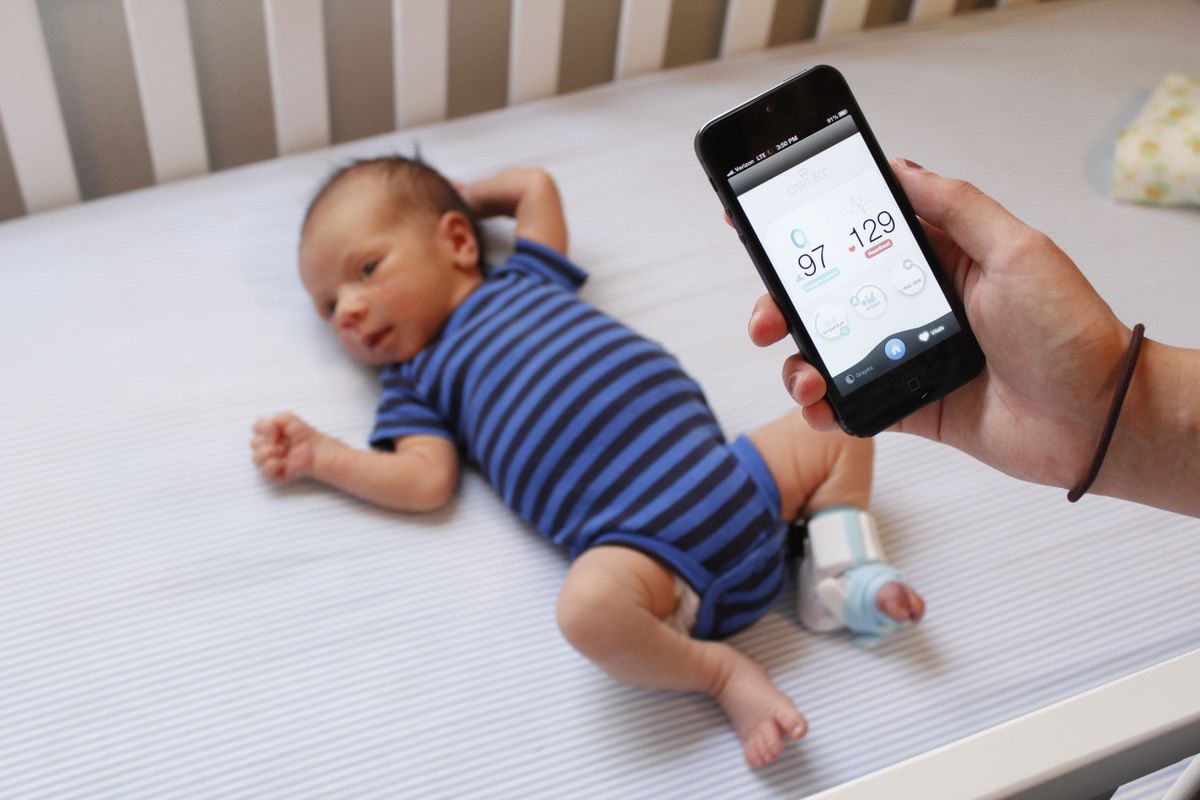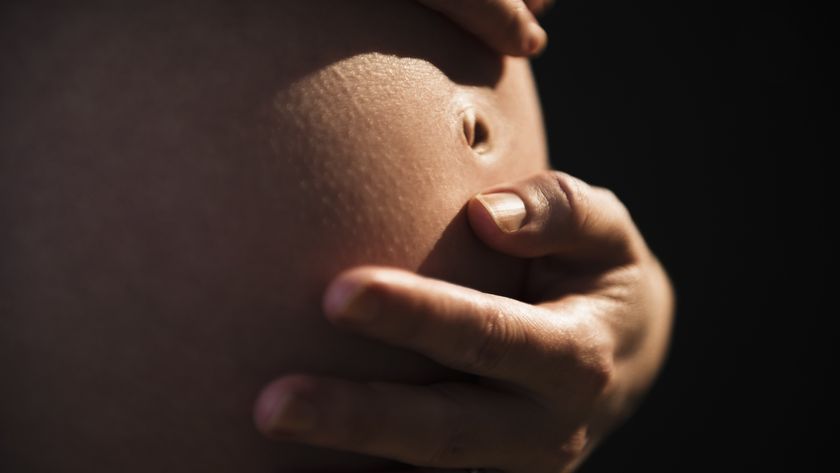Expensive Baby Monitors Give False Reassurance, Researcher Says

Monitors meant to reassure parents that their sleeping babies are still breathing are "smarter" than ever — but the devices are still not proven to keep little ones safe.
Thus, any peace of mind brought by these monitors, which can cost several hundred dollars, is false reassurance, according to a new article in the journal BMJ.
New monitors, marketed by startups such as Owlet and Sproutling, are sold as consumer devices and not medical devices. This distinction means they don't have to go through testing to prove that they really keep babies safe. And studies of at-home monitoring in the 1980s and 1990s found no evidence that tracking a baby's pulse or breathing could prevent sudden infant death syndrome (SIDS), which is the sudden, unexplained death of an infant, usually during sleep.
"They just don't work," said David King, a lecturer in pediatrics at the University of Sheffield in England who authored the new article. [7 Baby Myths Debunked]
SIDS fear
For parents, SIDS is a terrifying prospect, particularly because there are no clear answers as to what causes it. The diagnosis is made when an autopsy, review of the death scene and medical investigation provide no answers as to why a baby younger than age 1 died. The vast majority of SIDS deaths occur before 6 months of age. The current best understanding of SIDS suggests that abnormalities in the regions of the brain that control breathing may put babies at risk of not waking up or shifting positions if their oxygen intake is insufficient.
About 2,000 infants in the United States die of SIDS yearly, according to the Centers for Disease Control and Prevention. That makes SIDS the leading cause of death among infants between 1 month and 1 year old. Nevertheless, SIDS is very rare: Data show that 53.9 babies per every 100,000 live births die of SIDS, according to CDC data. This translates to 0.054 percent of infants.
Sign up for the Live Science daily newsletter now
Get the world’s most fascinating discoveries delivered straight to your inbox.
Monitoring baby
Devices that monitor babies' vital signs while they sleep have been around for decades, but the newest generation of these devices promises more ease and convenience. Owlet, for example, is developing a socklike pulse monitor that syncs to parents' smartphones. (The monitor is not yet on the market but can be preordered for $250.) Sproutling uses an ankle monitor to sense a baby's heart rate, skin temperature and motion, and promises to let you know "if your baby is sleeping soundly or if something is wrong," according to the product's website. Sproutling's monitor is likewise available for preorder for $259.
The marketing for these products does not refer to SIDS, but rather states that the devices watch for changes in heart rate or temperature.
"They have to tread quite a fine line," King said. As nonmedical devices, the monitors can't be marketed as preventing a medical condition, including SIDS. However, the language used to market the monitors plays on SIDS fears, King said. Even medical-grade monitoring does not appear to protect against SIDS. A major study of more than 1,000 infants, published in the Annals of the New York Academy of Sciences in 1988, found that instances of slowed heart rate and interrupted breathing during sleep are common in even healthy infants, and that most of these abnormalities vanish before the babies reach the ages during which SIDS peaks — between about 2 months and 4 months old. Thus, events that may cause at-home monitors to alert parents to potential danger are not linked with SIDS.
As a result of this and other similar research, the American Academy of Pediatrics recommends against at-home SIDS monitoring.
However, the makers of the next-generation monitors defend their products.
"I have hundreds of comments from Owlet testers, and none of them focus on SIDS," Kurt Workman, founder and CEO of Owlet, wrote in a statement to Live Science. "They just want to know if something is wrong."
The current product is not a medical device, Workman said, but the company is working on another monitor, for which it will seek Food and Drug Administration approval, Workman said. Monitors tested in the 1980s and 1990s required multiple sensors and wires, and parents often gave up on using them out of frustration, he said.
"We are in a new era with new possibilities, and shouldn't hold ourselves back because of the constraints we had 30 years ago," Workman said.
Sproutling, which makes a fitness-tracker-type monitor that can collect data on babies while they're asleep and awake, did not respond to Live Science's requests for comment.
The recommendation against using these types of monitoring devices to keep babies safe from SIDS may be discouraging to parents who hear constant warnings about SIDS danger. First, King said, parents should remember that the "vast majority of babies are healthy and fine," and speak to their doctors about any concerns.
Second, parents and caregivers should follow the recommendations proven to reduce the risk of SIDS, King said: Place babies on their backs to sleep, avoid bed-sharing, keep soft bedding out of cribs and don't smoke.
Follow Stephanie Pappas on Twitter. Follow us @livescience, Facebook & Google+. Original article on Live Science.

Stephanie Pappas is a contributing writer for Live Science, covering topics ranging from geoscience to archaeology to the human brain and behavior. She was previously a senior writer for Live Science but is now a freelancer based in Denver, Colorado, and regularly contributes to Scientific American and The Monitor, the monthly magazine of the American Psychological Association. Stephanie received a bachelor's degree in psychology from the University of South Carolina and a graduate certificate in science communication from the University of California, Santa Cruz.

'Mini placentas' in a dish reveal key gene for pregnancy

Diagnostic dilemma: Teen's improbable pregnancy occurred after oral sex









